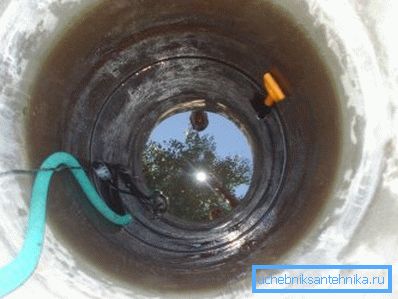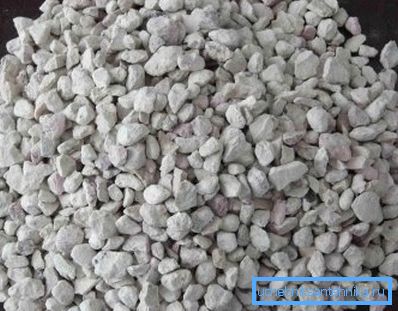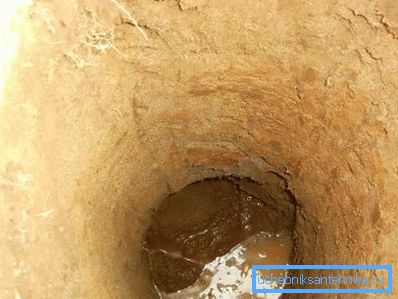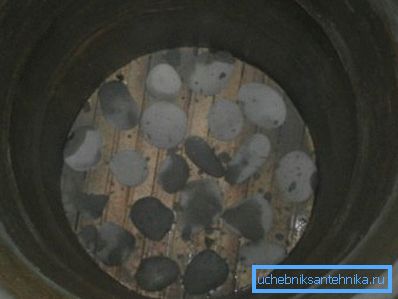Bottom filter for the well: when it is needed and how to
Owners of private houses, who have decided to adjust the water supply of their plot with the help of a well, have many questions about its design. Some of them - from what and how to make a bottom filter for a well?
Do I need it at all? How much will the water quality change after installation? This article will answer these and some other questions.

Do or not do
To determine whether a bottom filter is needed in a well, even during digging, it is necessary to examine its bottom for its determining rock, method of filling, direction of flow of the aquifer (read also the article Filtration well for wastewater treatment).
This can be done during a regular cleaning, especially if you are not satisfied with the quality of the water.
- The bottom is sandy. When the pump is in operation or when the bucket is dropped into the water, the sand agitates, making it cloudy and unsuitable for consumption. Water-lifting equipment will quickly fail, pumping water with mechanical impurities, as well as household appliances that work with it, such as a washing machine and dishwasher.

- The bottom consists of a layer of loose and soft clay eroded by water. Water in such a well with not enough good depth will always be muddy, unpleasant taste. If from the bottom to the level of the fence at least one and a half meters, you can do without filtering.
Note. The water level in the well varies depending on the season, in the summer it can greatly decrease. Therefore, the instruction recommends to arrange a bottom filter in it.
But on a dense clay bottom, from which the keys are beaten, it is useless to install a filter - it can only interfere with the normal influx of already clean water by blocking the streams from the water veins.
How to make a bottom filter
This element cannot be purchased in finished form - it is made by hand from natural materials such as quartz sand, gravel, crushed stone, river pebbles, etc. Let us dwell on them in more detail.
Materials used
The choice of materials from which the bottom filter will be made in the well depends on their availability in your area, as well as on the requirements for water treatment.
We list the main ones.
- Quartz sand. Detains the smallest suspended particles, not passing them through. You can find it on the river bank. Before use, the sand is thoroughly washed, for which it is placed in a container, poured with plenty of water and stirred.
Turbid water after a short settling is drained. And so several times to obtain almost pure water.

- Gravel. It often contains impurities of clay, sand, soil, plant residues, and therefore also needs a similar washing.
Council If the water in your well is hard, use flint gravel — it will change the hardness values down.
- River pebbles. The most popular material from which bottom filters are made for wells is easily accessible, natural, and does not require special preparation, except rinsing with water.
- Zeolite - porous mineral of volcanic origin, an excellent sorbent. Able to absorb heavy metals, radioactive elements, phenol and other substances hazardous to health, disinfect water. If you are not confused by the price of this material (about 600 rubles for 10 kg), be sure to use it.

- Shungite - it is used in wells located near highways, industrial and livestock enterprises, as it purifies water from petroleum products, heavy metal compounds and harmful organic pollutants.
Note! For the manufacture of the filter, you can use only "fresh" materials that have not been previously used in other cleaning systems.
Types of bottom filters
For high-quality water purification, always use a filling consisting of three layers of material of different fractions, the size of which differs 5-6 times. The thickness of each layer is at least 10-15 cm.
The bottom filter in the well according to the method of laying can be direct or inverse depending on the order of laying layers.
- A sand filter is arranged in wells with a sandy bottom, laying down a layer of the smallest fraction - quartz sand or small pebbles, then a layer of stones of medium size and, finally, large.
- If the bottom is loose clay, use a straight filter, stacked in a sequence of large - medium - small. He will not only purify the water, but will not allow the clay to be eroded.
In the same order, only on a special shield, the layers are stacked, if the well is built on moving sand saturated with water - floating. The shield is made several millimeters smaller than the inside diameter of the well, from wood or metal mesh.

- For the manufacture of wooden shield take boards of oak or aspen that can withstand the effects of water for a long time. They are knocked close to each other, after which they cut out a circle of the desired diameter from the resulting square and drill holes in it in the size of 0.5-1 cm. The finished shield is wrapped in geotextile and placed on the bottom of the well. Every 3-4 years it needs to be changed to a new one.
Council If possible, make a shield of juniper boards. They have antibacterial properties and are able to disinfect water.

- To make a metal shield, you need a fine-meshed grid of galvanized or stainless steel and galvanized iron sheets, from which you need to cut two rings of a diameter appropriate for a well. The mesh is inserted between them and bolted.
The shield is installed on a bed of large stones, fixed with pins mounted into the walls of the well, and then filter materials are placed on it.
Conclusion
Filtering materials help to clean the water, but they themselves need to be periodically washed or replaced. And the bottom filter for a well on a float over time is sucked into the sand and loses its effectiveness. Do not forget about this when you clean the well (see also the article Independent dredging of wells and with the help of specialists).
After watching the video in this article, you will learn how to do it correctly.